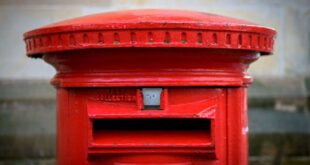Australian medics in the UK have revealed intensive care unit admissions have plummeted since the vaccine rollout.
And cases among frontline staff who were first in line for jabs have dropped significantly, with those who have had the jab telling their friends and family back home to jump at the chance of a vaccination.
The rollout of the Pfizer and Oxford vaccines in Britain has hit more than 16 million people, with plans for up to one million shots a day.
Kathryn Lennon, who works in intensive care at a London hospital, said nurses had previously looked after as many as four patients at a time but it was improving.
“I looked after just one patient last night and that’s the first time I’ve done that since November,” she said.
“The vaccine definitely has something to do with it. I haven’t seen a new case (in ICU) in a while, where we were admitting 10 patients a night – so that meant 10 patients were dying.”
Ms Lennon, 26, of Cairns, said she expected Australians would take the jab once they were offered it, despite reports this week of some concerns.
“They will take it, I know they will, if 15 million people in the UK in the older ages group have taken it, when their time comes (in Australia) they will.
“I was told I could get it at work and I ran down the hallway with excitement.”
Ms Lennon, due to have her second shot next week, said the jabs were life saving and the only way to get back to “some kind of normality.”
“It’s your ticket to freedom,” she said, adding she expected a higher take up in Victoria after its three lockdowns.
Kathryn Lennon, 25, at Piccadilly Circus in London. Picture: Hollie Adams

‘The vaccine is working.’ Picture: Hollie Adams
Australians have been on the frontline, with 20 per cent of paramedics in London calling Australia home, while nurses, occupational therapists, and doctors from Queensland, New South Wales and Victoria filling key roles.
Some involved in mass vaccination centres say they have personally seen thousands of injections, with only one side effect of dizziness that was related to dehydration.
It is a remarkable change from the depths of winter in December in Britain when official cases were skyrocketing at more than 60,000 a day, but the real number was more than one million when asymptomatic cases were included.
Staff were being forced off sick because of the new more infectious UK variant and the death toll each day was more than 1000.
But now, there is light and hope, as the runaway success of Britain’s vaccination program has seen a dramatic reduction in cases.

Harriet Yeates, 27, of Townsville, is an occupational therapist. She has been diverted to helping discharge patients at London’s Royal Free Hospital during the COVID pandemic.
“We’ve got a lot of staff back – so many were off with COVID or because they had been in contact with someone with COVID,” occupational therapist Harriet Yeates, 27, said.
“Either the staff have had it or the vaccine is doing its job, the numbers are going down.”
Ambulance call outs, which were topping 9000 a day, have dropped to 5000 a day in London.
And at the peak of the crisis nearly all ambulance call outs were related to COVID, while that has dropped to as little as once a shift.
Ms Yeates, from Townsville, Queensland, said the virus was taking out so many staff in December, before the roll out of the vaccine, compared with the first wave.
“This time it was so much more infectious,” she said.
All over 70s have been offered the injection in the UK, now clinically vulnerable people are being sent letters inviting them to take part.
Ms Yeates, who works at the Royal Free Hospital in London, has switched from her OT role to helping in the flow of patients through the hospital.
She has been working to make sure patients that can be discharged so that beds are freed up for more patients, with almost 40,000 in hospitals with COVID at the peak of the crisis.
Some elderly patients had been saying before they took the jab that they had nothing to live for because the harsh lockdowns in the UK had stopped them from seeing their loved ones.
Now they had hope.
Ms Yeates, who had her second dose on January 8, said Australians should get the jab.
“I was one of the first in there. It’s the best thing we have got, we just have to give it a go,” she said.
She understood why some people would be concerned about the speed of the approval of the vaccines, but said that the world’s scientific community had been so focused on the job it fast tracked the process, rather than cutting corners.
Australians have also been at the frontline of the vaccinations program in the UK.
Sabrina Galasso, 27, of Sydney, has been working in a centre that has given out more than 50,000 vaccinations.
The accountant, who retrained to take part in the campaign, said she had seen only one side effect with a patient who became dizzy because they were dehydrated.
The type-1 diabetic, who has had the first dose of the jab, said she had seen first hand the impact of the rollout, with elderly patients grateful for the life saving jabs.
Some of those given the first jab in December had already received a second dose in January.
“We’re now getting people on their second doses and I ask them what their side effects were,” she said.
“Every single patient over 90 has said that they only had a sore arm for a bit, so if a 90 year old can handle it then everyone just needs to be brave.”
Ms Galasso said she respected that some people may not want the jab, and had even had cases where people changed their mind in the vaccination centre.
But she added that it was the only way out of the pandemic.
She now plans to train to be a nurse when she returns to Australia.
stephen.drill@news.co.uk
Originally published as Aussie medics: COVID jab ‘is working in UK’



